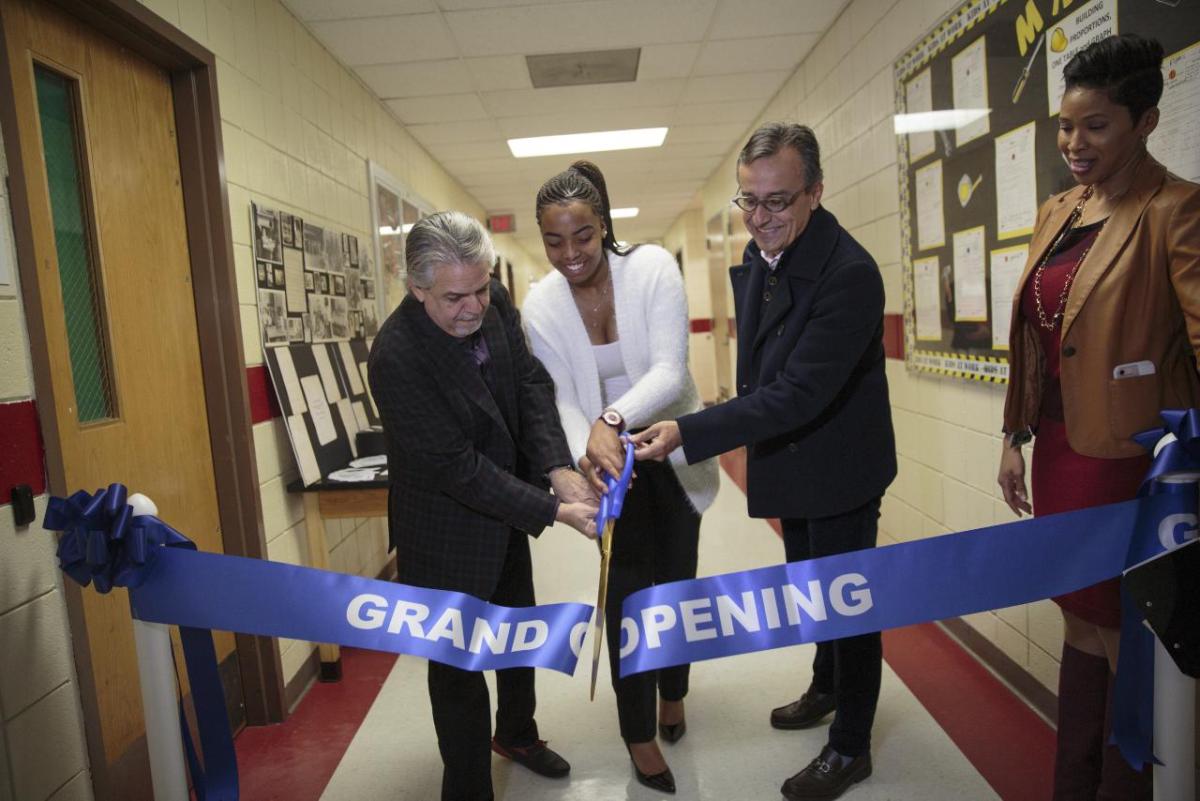Helping the Next Alexander Hamilton Rise
HP is collaborating with the Graham School to give underserved teens their shot at greatness.
Two lines in the last scene of the hip hop Broadway phenomenon “Hamilton” have had an outsized impact.
“Oh, can I show you what I’m proudest of? I established the first private orphanage in New York City,” sings Eliza Hamilton, referring to the Orphan Asylum Society, which she founded after her husband’s death to help children like Alexander Hamilton, who was an orphan.
When Luis A. Miranda Jr., father of the play’s creator, Lin-Manuel Miranda, heard those words during rehearsals, he wanted to know more. A Google search led him to the Graham School, part of a nonprofit family-services agency that began over 200 years ago with the orphanage founded by Eliza Hamilton.
Today the Graham School has 300 students from socio-economically challenged New York City neighborhoods who often have huge gaps in their education due to poverty, addiction, foster care and other hardships. “I immediately realized that the new orphans are foster-care kids,” explains Luis Miranda, who is now the school’s Honorary Outreach Chair.
After HP Chief Marketing Officer Antonio Lucio heard the same lyrics while attending the show in 2015, he reached out to Luis Miranda on Twitter to learn more about the Graham School. That Twitter exchange kicked off a multi-year partnership between HP and the school to bridge the digital divide for its students.
“[Alexander Hamilton] could have been a student at this school,” says Luis Miranda. “He had a dad, but really didn't have a dad. His mom died. And he ended up living with relatives, cold and young in New York City. So he certainly could have been one of the kids served by the orphanage that Eliza Hamilton created.”
The theme of ambition and how it’s nurtured — or not — connects “Hamilton,” Luis Miranda's involvement in the Graham School and HP’s collaboration.
The HP program isn’t your typical tech-in-schools effort. This isn’t just about equipping students and teachers with the latest digital gadgets and apps. It's about developing a multi-year program that will take students from bare-bones technology know-how to full digital immersion.
The goal: Teach the real skills kids need to succeed in today’s world as well as how to continue to learn and collaborate throughout their lives. The eventual goal is to apply the lessons learned from this experiment to other schools.
First, in addition to donating Chromebooks for every high school student and teacher, the HP team upgraded the Graham School’s infrastructure to support the new technology and then trained its teachers in the software and programs.
Next, HP partnered with Hewlett-Packard Enterprise, MRA, Intel and Digital Promise to weave management consulting and professional development and training throughout the program. This helps drive the school’s mission of providing a successful specialized education for students who otherwise might not have the opportunities or resources to keep pace with their peers.
Just as crucially, HP and the Graham School will collect a battery of metrics along the way to track the program’s impact — not just on test results and graduations rates, but also on how the students feel about themselves and the world around them, and how they do in college and later on in their careers.
Last month, the Graham School and HP officially launched their collaboration with the unveiling of the HP Learning Studio, an on-site technology resource and immersive classroom for students to use. The Studio offers innovative new tech features, such as 3D printing software and printers, to help expand students’ creative engagement with the school’s curricula.
The ceremony featured Luis Miranda, Lucio and several current students, with live demos of the new technology by Graham School faculty.
“A lot of [the students] want more technology. A lot of them want each classroom to look like this,” said Heberto Espinosa, a ninth grade algebra teacher at the Graham School. “It’s really inspirational to see them have a space where they can be creative.”
One of the students, Paloma Hernandez, volunteered in helping to set up the Learning Studio. “I'm most excited for the 3D printing,” she said. “I never thought that I would be able to use it because it seemed like a very luxury item.”
For Luis Miranda, HP’s involvement with the Graham School carries on the legacy of Alexander Hamilton. “Companies can enhance what exists,” he says. “They can create tracks to teach kids what companies are looking for.” And that means opportunity — the essence of the American dream.



